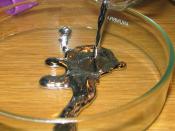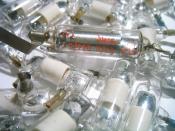Environmental Toxicology Paper
Phillip Voliva
ENV/410
March 3, 2014
Alicia Dillon Holloway
Environmental Toxicology Paper
I will first explain the difference between toxicokinetics and toxicodynamics. Toxicants interact with living organisms in a series of five time-dependent processes. The study of these processes is called toxicokinetics. These processes are absorption, distribution storage, biotransformation and elimination. There are unique cellular effects within the organism when they come in contact with the toxicant. Toxicodynamics is an examination of the way these effects happen. There are many similarities as well as important differences between the toxicokinetics and pharmacokinetics of most substances. The same applies to pharmacodynamics and toxicodynamics (Olson, n.d.).
The approach for conducting toxicokinetics studies that is recommended by most scholars generally involves three steps. Goehl (1997), "Step 1 is a preliminary study, which uses a minimum number of animals to estimate the range of blood/tissue concentrations, the required quantitation limit for the analytical method, and the optimal sampling times for the definitive toxicokinetic studies.
Step 2 is the definitive study and generates blood and/or tissue concentration data for calculating the toxicokinetic parameters. Step 3 is the toxicokinetic study conducted in conjunction with the toxicology study to determine the internal dose and the effects of age and continuous exposure on kinetic parameters" (Toxicokinetics in the National Toxicology Program).
There are four primary routes of exposure to chemical contaminants; injection, ingestion, topical and inhalation. Because of the chemical being directly introduced into the body, injection is the only method where the entire amount is absorbed regardless of how much is given. Chemicals may be injected intravenously directly into a vein or intramuscularly. The other methods of injection are subcutaneously, which is under the skin or intraperitoneally, directly into the membrane lining the organs of the stomach (Al-hamad, 2012).
Ingestion is the route of exposure...


